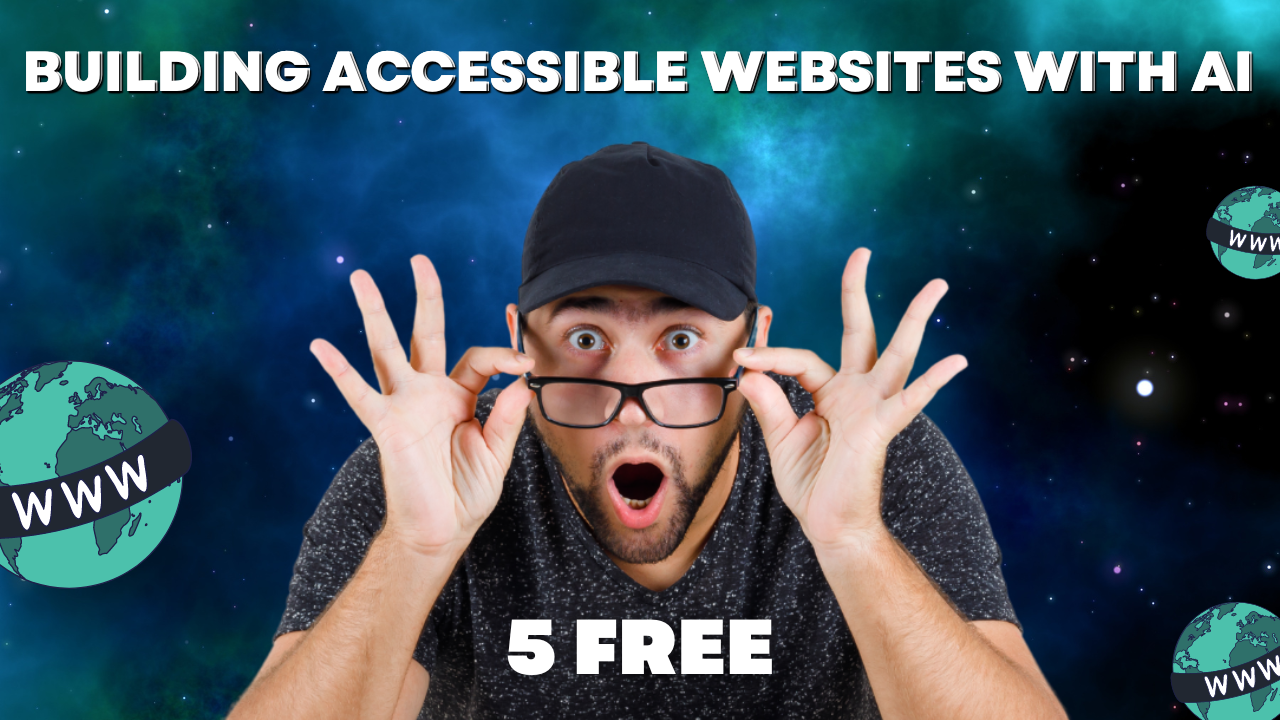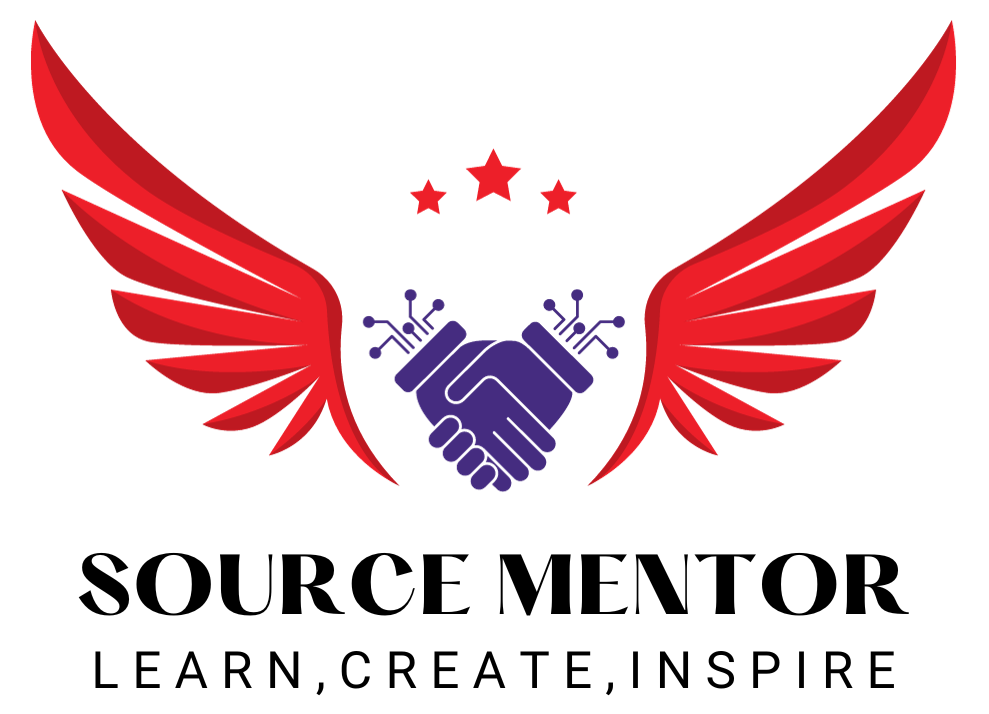Building Accessible Websites with AI
In today’s digital age, ensuring that websites are accessible to everyone, including individuals with disabilities, is more important than ever. Accessibility is not just a legal requirement in many regions; it’s a moral imperative that ensures everyone can access and benefit from the internet. With the advancements in artificial intelligence (AI), web designers now have powerful tools at their disposal to create websites that are not only aesthetically pleasing but also inclusive and accessible to all users.
AI Accessible Web Design
AI Accessible Web Design
Why Accessibility Matters
Web accessibility involves designing and developing websites so that people with various disabilities can use them without barriers. This includes individuals with visual, auditory, motor, and cognitive impairments. Accessible websites ensure that all users, regardless of their abilities, can perceive, understand, navigate, and interact with the web.
The Role of AI in Accessibility
AI plays a crucial role in enhancing web accessibility by automating many aspects of the design and testing process. From generating alt text for images to providing real-time accessibility audits, AI tools can help ensure that your website meets the latest accessibility standards, such as the Web Content Accessibility Guidelines (WCAG).
Understanding Accessibility Standards
Overview of WCAG Guidelines
The Web Content Accessibility Guidelines (WCAG) are a set of international standards that define how to make web content more accessible. These guidelines are organized under four principles:
- Perceivable: Information and user interface components must be presented in ways that users can perceive. This includes providing text alternatives for non-text content, such as images and videos.
- Operable: User interface components and navigation must be operable. For example, all functionality should be accessible via a keyboard.
- Understandable: Information and the operation of the user interface must be understandable. This includes ensuring that text is readable and that forms are easy to use.
- Robust: Content must be robust enough to be interpreted reliably by a wide variety of user agents, including assistive technologies.
Legal Implications of Non-Compliance
Failing to meet accessibility standards can result in legal consequences, including lawsuits and fines. In many countries, laws such as the Americans with Disabilities Act (ADA) in the United States and the Equality Act in the UK mandate that websites must be accessible to individuals with disabilities.
AI Tools for Building Accessible Websites
AI-Powered Accessibility Audits
AI tools can conduct comprehensive accessibility audits of your website, identifying issues that might be missed by manual testing. These tools can scan your site for compliance with WCAG standards and provide detailed reports on what needs to be fixed.
- Example Tools: Axe by Deque, WAVE Accessibility Evaluation Tool
Automated Alt Text Generation
AI can automatically generate descriptive alt text for images, ensuring that users with visual impairments can understand the content of images on your site. This feature is particularly useful for large websites with a vast amount of imagery.
- Example Tools: Microsoft Azure Cognitive Services, Google Cloud Vision AI
Keyboard Navigation Optimization
AI can assist in optimizing your website for keyboard navigation, ensuring that users who cannot use a mouse can still navigate your site effectively. This includes setting up focus indicators and ensuring that all interactive elements are accessible via keyboard shortcuts.
- Example Tools: AI-driven CSS frameworks, custom scripts integrated with AI
Real-Time Text-to-Speech and Captioning
AI-driven text-to-speech and captioning tools can make your content accessible to users with hearing or cognitive impairments. These tools can generate real-time captions for videos and convert written content into speech.
- Example Tools: Google’s Speech-to-Text API, Amazon Transcribe
Designing with Inclusivity in Mind
Incorporating Universal Design Principles
Universal design is about creating products and environments that are usable by all people, to the greatest extent possible, without the need for adaptation or specialized design. When applied to web design, it involves creating a website that is accessible, flexible, and intuitive for everyone.
- Principles to Consider: Equitable use, flexibility in use, simple and intuitive design, perceptible information, tolerance for error, low physical effort, and appropriate size and space for approach and use.
Color Contrast and Visual Design
AI tools can help you choose color schemes that are accessible to individuals with visual impairments, such as color blindness. These tools can automatically adjust contrast ratios to ensure that text is readable against different backgrounds.
- Example Tools: Adobe Color Accessibility Tools, Stark for Figma
Scalable and Responsive Design
AI can assist in creating websites that are fully responsive and scalable, ensuring that they are accessible on all devices, from desktop computers to smartphones. This includes adjusting text size, reflowing content, and optimizing touch targets for users with motor impairments.
- Example Tools: AI-driven responsive design frameworks, Bootstrap with AI enhancements
AI Accessible Web Design
Testing and Iteration with AI
Continuous Accessibility Testing
Building an accessible website is not a one-time task; it requires ongoing testing and iteration. AI can facilitate continuous testing by regularly scanning your website for accessibility issues and providing actionable insights.
User Testing with AI Assistance
Incorporating feedback from real users is crucial for ensuring that your website meets accessibility standards. AI can help simulate user interactions and identify potential issues before they affect actual users. Additionally, AI can assist in analyzing user feedback and identifying patterns that indicate accessibility problems.
- Example Tools: UserTesting with AI analytics, Loop11 with AI-powered insights
Iterating Based on Feedback
Use the insights gained from AI-powered testing and user feedback to make iterative improvements to your website. This may involve adjusting design elements, improving content accessibility, or enhancing overall user experience.
Case Studies of AI-Driven Accessible Websites
Successful Implementations
Explore case studies of companies and organizations that have successfully implemented AI to build accessible websites. These examples can provide inspiration and practical insights into how AI can be leveraged to achieve accessibility goals.
- Example 1: [Company X] used AI tools to audit and redesign their website, resulting in a 20% increase in user engagement among individuals with disabilities.
- Example 2: [Organization Y] implemented AI-driven text-to-speech and alt text generation, significantly improving the accessibility of their content.
Lessons Learned
Each case study will include lessons learned during the process, highlighting challenges faced and how they were overcome. This section will provide valuable takeaways for anyone looking to use AI to enhance their website’s accessibility.
The Future of AI and Web Accessibility
Emerging AI Technologies
As AI technology continues to evolve, new tools and capabilities are emerging that can further enhance web accessibility. This section will explore cutting-edge developments, such as AI-driven personalization for users with disabilities and more advanced real-time accessibility auditing tools.
AI and the Shift Towards Inclusive Design
AI is not only making it easier to build accessible websites but also driving a broader shift towards inclusive design in the digital space. This section will discuss how AI is helping to break down barriers and create a more inclusive internet for everyone.
Preparing for the Future
As web accessibility standards continue to evolve, it’s essential to stay ahead of the curve. This section will provide tips on how to keep your website compliant and accessible, including staying informed about new AI tools and best practices in inclusive design.
AI Accessible Web Design
Conclusion and Final Recommendations
Final Thoughts on AI and Accessibility
AI offers powerful tools for building accessible websites, but it’s important to approach this technology with a clear understanding of its limitations and potential. While AI can automate many aspects of the design process, human oversight is still crucial to ensure that accessibility standards are met.
Recommendations for Web Designers and Developers
For web designers and developers looking to leverage AI for accessibility, this section will provide practical recommendations, including:
- Start with Accessibility in Mind: Make accessibility a priority from the beginning of your design process.
- Use AI as a Tool, Not a Crutch: While AI can automate many tasks, it’s important to stay involved in the process to ensure that the final product meets your standards.
- Stay Updated on Best Practices: The field of web accessibility is constantly evolving, so it’s important to stay informed about the latest tools, techniques, and standards.
By following these guidelines, you can create websites that are not only beautiful and functional but also accessible and inclusive for all users.
